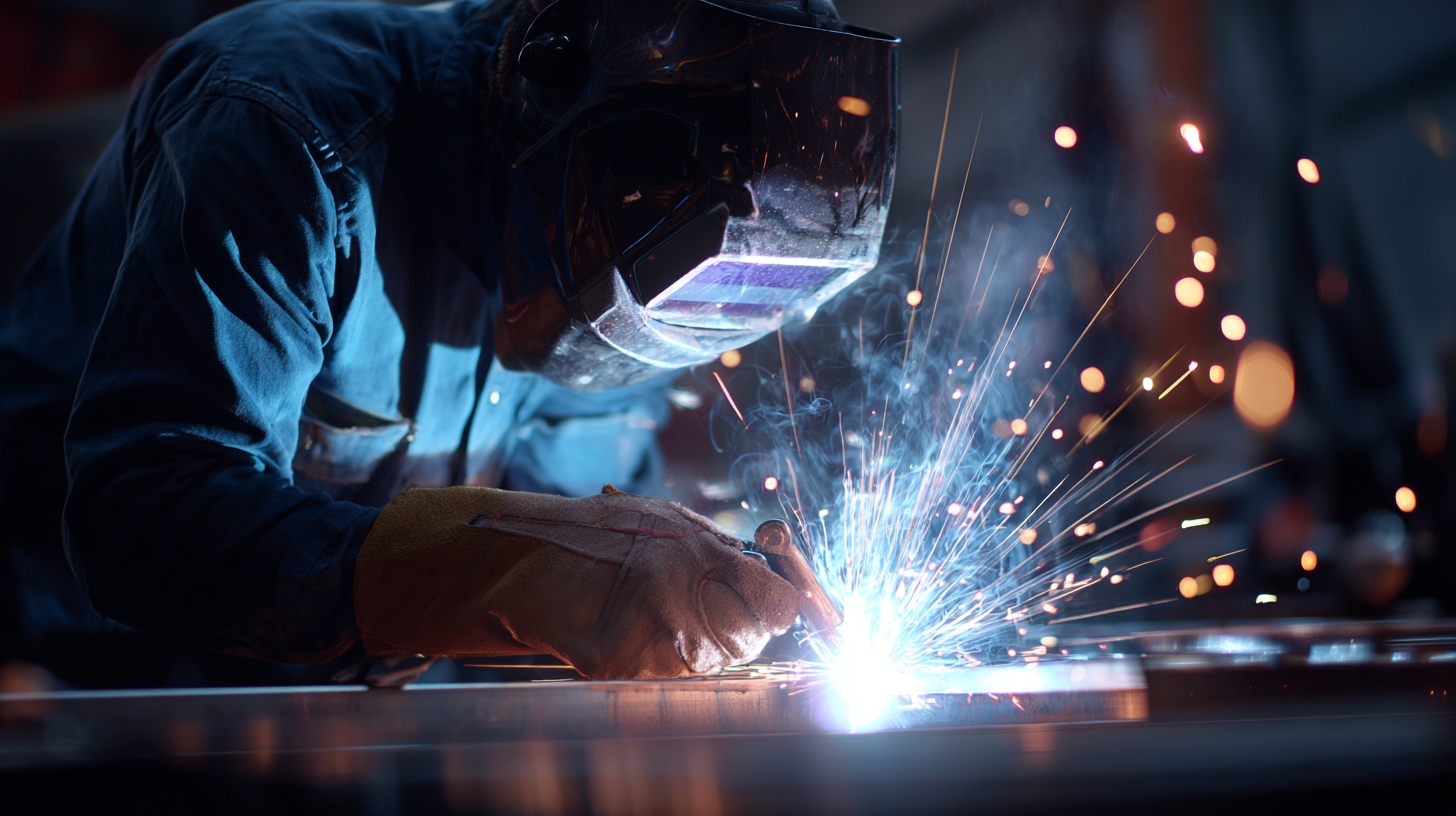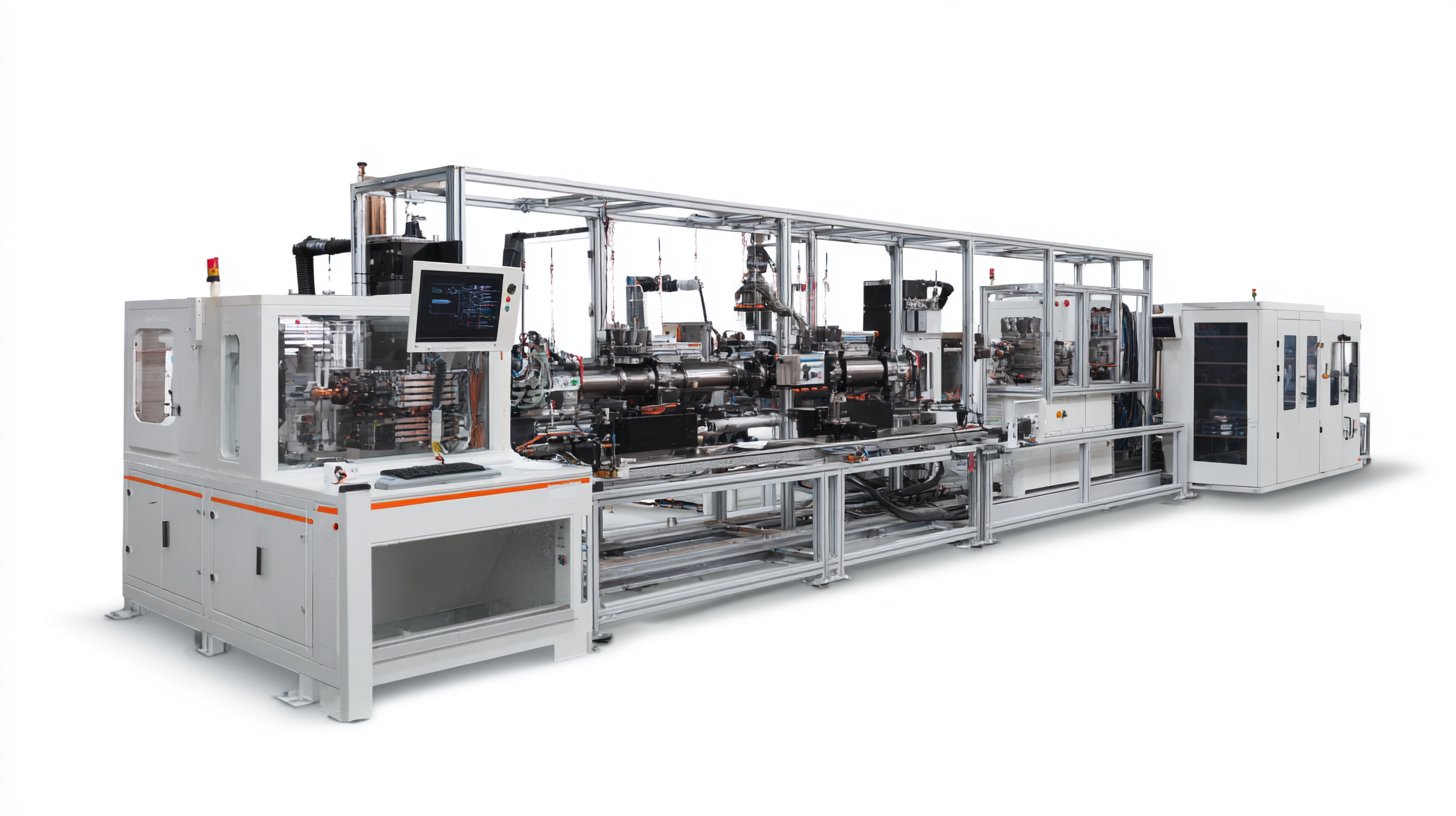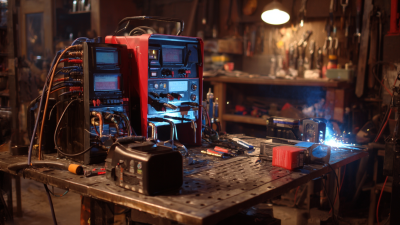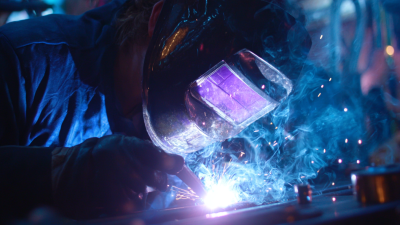Revolutionizing Industrial Manufacturing: The Future of Seam Welding Machines in Modern Applications
In the ever-evolving landscape of industrial manufacturing, the advent of advanced technologies promises to enhance efficiency and precision across various processes. Among these innovations, the seam welding machine stands out as a transformative tool that not only streamlines production but also meets the diverse demands of modern applications. The integration of digital technologies with traditional welding techniques is paving the way for smarter, more adaptable manufacturing systems. This shift towards automation and data-driven processes serves to optimize operational performance, minimize waste, and enhance product quality. By exploring the capabilities of next-generation seam welding machines, industries are poised to revolutionize their manufacturing practices, fostering a new era of productivity and innovation. This article delves into the strategic importance of seam welding machines and their critical role in shaping the future of industrial manufacturing.

The Evolution of Seam Welding Technology in Industrial Manufacturing
 The evolution of seam welding technology has significantly transformed industrial manufacturing processes, enhancing productivity and efficiency. Traditionally, seam welding relied on simple electrode principles, which often resulted in inconsistent weld quality. However, advancements in engineering and technology have led to more sophisticated systems that utilize computer-controlled processes and high-frequency currents. These innovations ensure better thermal management and uniformity in joints, making seam welds stronger and more reliable across various materials.
The evolution of seam welding technology has significantly transformed industrial manufacturing processes, enhancing productivity and efficiency. Traditionally, seam welding relied on simple electrode principles, which often resulted in inconsistent weld quality. However, advancements in engineering and technology have led to more sophisticated systems that utilize computer-controlled processes and high-frequency currents. These innovations ensure better thermal management and uniformity in joints, making seam welds stronger and more reliable across various materials.
Moreover, modern seam welding machines are now equipped with smart features, including real-time monitoring and data analytics. This integration allows manufacturers to optimize production conditions, reduce waste, and predict maintenance needs, thereby minimizing downtime. The shift towards automation and enhanced process control has set the stage for a new era of manufacturing, where precision and agility are paramount. As industries continue to evolve, the future of seam welding technology promises even greater advancements, paving the way for further innovations in diverse applications, from automotive to aerospace and beyond.
Key Applications of Seam Welding Machines in Modern Industries
Seam welding machines have become vital components in various modern industries, showcasing their versatility and efficiency in applications such as automotive manufacturing, aerospace, and electronics. According to a recent report by Market Research Future, the global seam welding machine market is projected to grow at a compound annual growth rate (CAGR) of 8.5% from 2022 to 2028, driven primarily by the increasing demand for durable and high-quality welds in production processes. In the automotive sector, for instance, seam welding ensures the structural integrity of components, essential for meeting safety regulations and enhancing vehicle longevity.
In the aerospace industry, the precision of seam welding machines facilitates the assembly of lightweight, high-strength materials that are crucial for performance and fuel efficiency. The 2023 Industry Research Report highlights that seamless welding techniques have led to a reduction in material waste by up to 30%, significantly lowering operational costs. Similarly, in electronics manufacturing, seam welders are employed to produce reliable connections in devices, contributing to the growing trend toward automation and smart manufacturing practices, projected to achieve a market value exceeding $500 billion by 2025. As industries continue to innovate, seam welding machines will play an increasingly critical role in achieving efficiency, quality, and sustainability in production.
Revolutionizing Industrial Manufacturing: The Future of Seam Welding Machines in Modern Applications
| Application Area | Industry | Welding Method | Advantages | Expected Growth Rate (%) |
|---|---|---|---|---|
| Automotive Manufacturing | Automobile | Spot Welding | Fast processing, high strength | 7.5 |
| Shipbuilding | Marine | Seam Welding | Durable, corrosion-resistant | 6.0 |
| Aerospace Components | Aerospace | Laser Welding | Precision, minimal thermal distortion | 8.2 |
| HVAC Systems | Construction | TIG Welding | Clean, strong joints | 5.5 |
| Pipeline Construction | Oil & Gas | Arc Welding | High penetration, efficiency | 9.0 |
Innovative Features of Advanced Seam Welding Machines
The evolution of seam welding machines has transformed industrial manufacturing by introducing innovative features that enhance efficiency and precision. Advanced seam welding machines now incorporate cutting-edge technologies such as laser and ultrasonic welding, offering superior control over the welding process. These methods not only improve the quality of welds but also reduce production time significantly. The integration of automation and robotics has further streamlined operations, allowing for consistent output and minimizing human error.
In addition to improved welding techniques, modern seam welding machines are designed with user-friendly interfaces that facilitate ease of operation. Intelligent software systems enable real-time monitoring and data analysis, ensuring optimal performance and predictive maintenance. Moreover, advanced safety features ensure a secure working environment, reducing the risk of accidents. The combination of these innovative features positions seam welding machines at the forefront of industrial manufacturing, driving productivity and fostering advancements across various sectors.
Revolutionizing Industrial Manufacturing: Seam Welding Machine Efficiency
This chart illustrates the efficiency improvement of advanced seam welding machines from 2019 to 2023. As technology progresses, the efficiency of these machines has consistently risen, showcasing their pivotal role in modern industrial manufacturing applications.
Challenges and Solutions in Seam Welding Automation
Seam welding automation is essential for enhancing productivity and precision in modern manufacturing processes.
However, several challenges hinder its widespread adoption. One significant issue is the need for specialized training for operators to effectively manage these advanced machines. Without proper understanding and skills, the risk of errors increases, which can lead to significant downtime and higher operational costs. Additionally, integrating seam welding machines into existing production lines can be complex, requiring careful planning and resources.
To overcome these challenges, companies should focus on investing in comprehensive training programs for their workforce. This not only empowers employees but also ensures that the equipment is utilized to its fullest potential. Moreover, manufacturers can explore modular welding systems that are easier to integrate and adapt to diverse production requirements.
Tips: When selecting seam welding equipment, assess the specific needs of your operations. Consider factors such as material types, production volume, and existing infrastructure. Another tip is to establish a preventive maintenance schedule to minimize disruptions and extend the lifespan of the machines, ensuring consistent output quality.
The Future Trends of Seam Welding in Manufacturing Processes
The future of seam welding in manufacturing processes is witnessing significant growth, driven by advancements in technology and increasing demand for high-quality components, particularly in sectors such as automotive and renewable energy. The welding equipment market is projected to reach approximately $159.63 million by 2025, expanding to around $272.23 million by 2033, at a compound annual growth rate (CAGR) of 6.9%. This trend underscores the evolving requirements for precision and reliability in manufacturing, particularly as industries embrace automation and smart manufacturing practices.

Moreover, the seamless stainless steel pipe market is also on an upward trajectory, expected to grow from $5.34 billion in 2024 to $7.21 billion by 2033, driven by a CAGR of approximately 3.4%. This growth reflects the rising demand for durable and efficient materials in construction and infrastructure projects. As manufacturers adopt innovative welding techniques and enhance their operational efficiencies, the trend towards more sophisticated seam welding machines will continue to shape the landscape of industrial manufacturing in the coming years.

Contact us
Please fill out the enquiry form, and our dedicated team will promptly attend to your request


